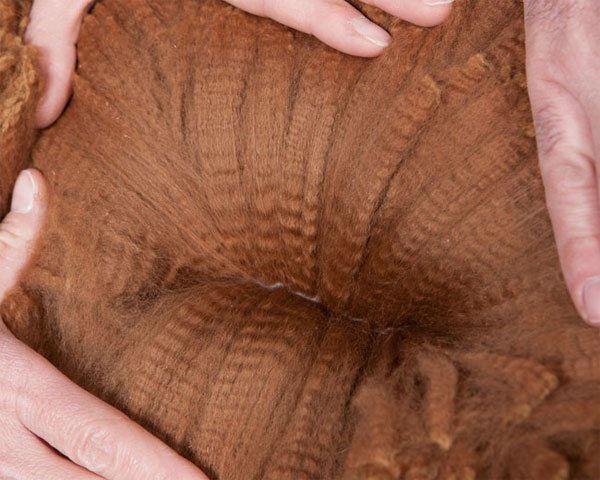The Science of Alpaca Fiber
All Camelids generally boast a lower fiber scale relief than most other fiber bearing animals. Scales, formed as the fiber grows, create microscopic edges that have a significant impact on how the fiber feels to human touch. When magnified, the importance of the scales becomes crystal clear: the lower the relief, the smoother the hand. This is where alpaca fiber shines. Both Huacaya and Suri alpaca fiber have a lower scale relief than sheep’s wool and many other fibers. This gives fine grades of alpaca a smooth texture more suitable to producing luxurious, next-to-skin garments.
At Applewood Lane, our goal is to produce elite fiber. That’s why we’ve started with excellent genetics and are committed to moving the breed forward one animal at a time

Common Fibers Blended with Alpaca
- Alpaca and acrylic – adds durability and machine washability
- Alpaca and wool – gives alpaca more elasticity
- Alpaca and silk – silk adds a luxurious sheen, fine gauge and elegant drape
- Alpaca and bamboo – decreases fiber variation, adds durability and crispness
- Just 10-20% of bamboo fibers creates a binding agent for alpaca fibers and decreases fiber migration and pilling.
- Alpaca and cotton – lends lighter weight for warmer weather wear
What Makes Alpaca Fiber Special?
- ALL FIBER USABLE
- SOFT
- LOW PRICKLE FACTOR
- MOISTURE-WICKING
- NON-IRRITATING
- HYPOALLERGENIC (reported to be)
- NON-TOXIC
- RESISTANT TO UV RADIATION
- WATER REPELLENT
- DURABLE
- DRAPES WELL
- DOES NOT PILL
- WARM AND INSULATIVE
- RESISTANT TO DIRT
- HYGROSCOPIC
- BLENDABLE
- LIGHTWEIGHT
- AFFORDABLE
- PRACTICAL
- SILKY, LUSTROUS TEXTURE
- COMES IN MANY NATURAL COLORS
- FELTABLE
- LITTLE STATIC
- FLAME-RESISTANT
- DURABILE, TENSILE STRENGTH
- LUXURIOUS
- WRINKLE RESISTANT

Visit Our Online Store
Unique products made from alpaca fiber and more.

